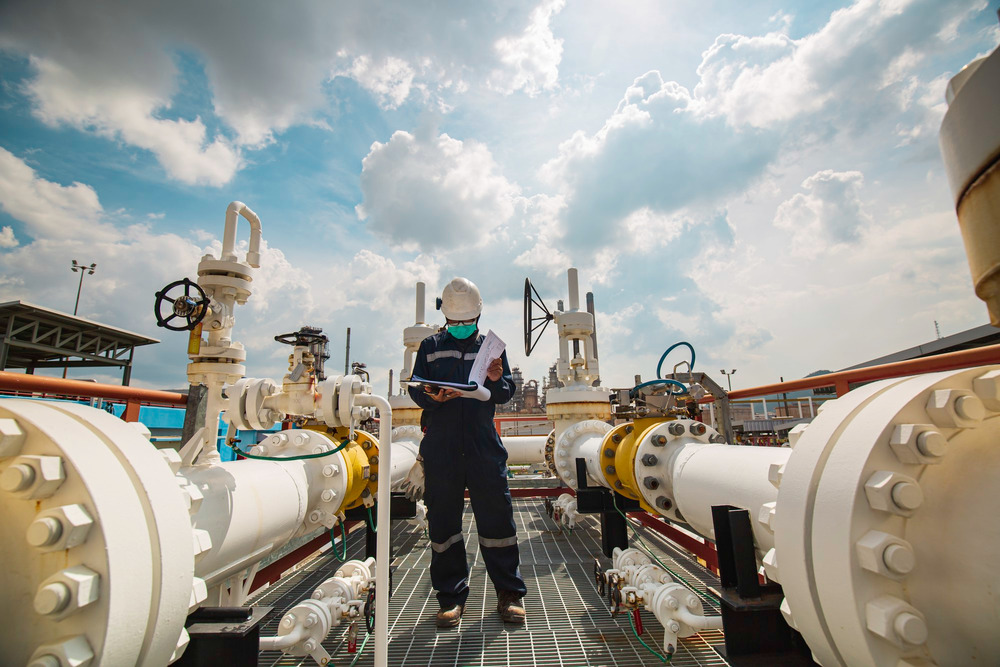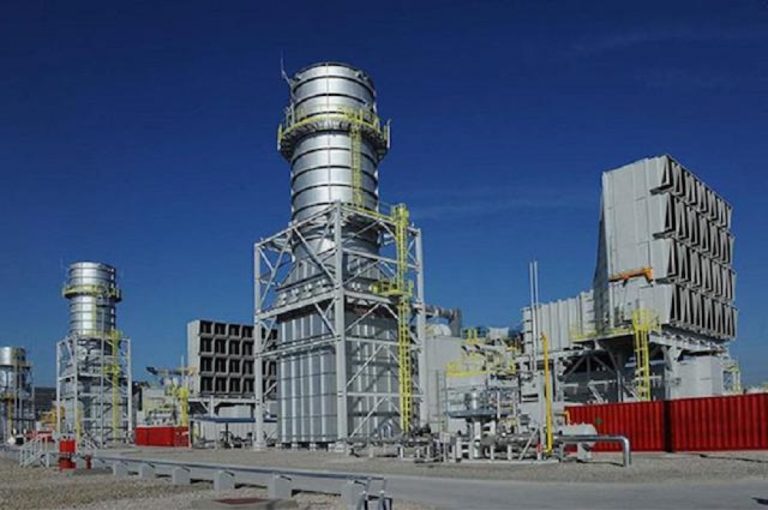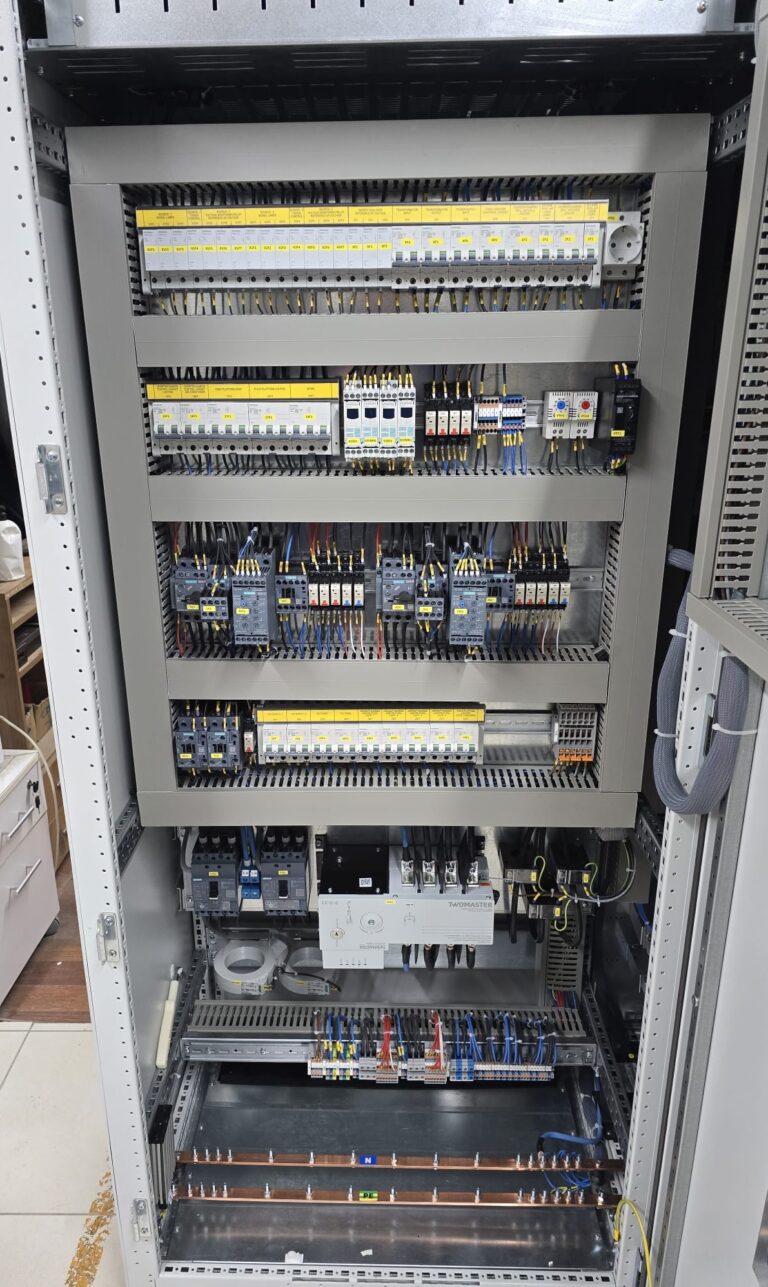What is a Pressure Reducing Station? What Does It Do?
A pressure reducing station is a crucial system used in industrial and utility applications to regulate and control the pressure...
Devamını Oku

In industrial safety, minimizing risks is not only about equipment quality but also about understanding the physical and chemical properties of gases. The Upper Explosion Limit (UEL) defines the maximum concentration of a flammable gas in air; above this threshold, the mixture is no longer flammable because the oxygen content is insufficient for combustion. This critical value serves as one of the cornerstones of safety in systems where gases are present. In particular, in petrochemical plants, natural gas facilities, refineries, and chemical industries, the UEL value is one of the most scientific ways to control explosion risks.
If the UEL value is not known in a given environment, safety calculations remain incomplete, which may lead to accidents causing loss of life and property. For this reason, UEL is essential in process engineering, automation systems, and especially exproof systems during the design phase. Engineering companies such as Adatech integrate these parameters into their projects to meet international safety standards. In such systems, alarms are triggered before the gas concentration reaches UEL levels, preventing possible hazards. Therefore, the Upper Explosion Limit is not merely a technical concept but a vital parameter forming the foundation of safety strategies.
The Upper Explosion Limit (UEL) refers to the highest concentration of a flammable gas mixed with air that can still cause combustion. If the gas concentration exceeds this level, an explosion cannot occur because there is not enough oxygen to sustain the reaction. This means the gas mixture becomes too “rich” to ignite, though it may still pose risks such as toxicity or asphyxiation. Alongside the lower explosion limit (LEL), UEL is a critical parameter in explosion risk analysis.
Understanding what UEL means is essential for designing safe industrial environments. It plays a central role in configuring gas detectors, alarm systems, and exproof equipment. Since UEL values differ for each gas and may vary with factors like temperature and pressure, engineers must carefully account for them. By doing so, facilities can establish reliable safety measures and prevent catastrophic events.
The Upper Explosion Limit (UEL) becomes critical when the concentration of a flammable gas in the air approaches this maximum threshold. This typically occurs due to gas leaks, poor ventilation, or equipment malfunctions in industrial settings. Once the gas concentration nears the UEL, the risk of explosion peaks, making immediate safety interventions and automatic system responses essential.
The Upper Explosion Limit (UEL) value is determined through controlled laboratory experiments. A gas is gradually mixed with air in specific concentrations and then ignited to observe at what point combustion no longer occurs. Factors such as temperature, pressure, and humidity are carefully considered during these tests to ensure accuracy. These standardized measurements are essential for reliable industrial safety planning.
In industrial facilities, gas safety is vital for protecting workers, equipment, and production processes. The Upper Explosion Limit (UEL) acts as a key indicator for identifying and controlling explosion risks. Gas detectors, alarm systems, and exproof equipment are often calibrated using UEL values to ensure hazards are detected before reaching dangerous levels. This proactive approach helps maintain both safety and operational continuity.
Facilities such as refineries, petrochemical plants, natural gas stations, and paint manufacturing sites rely heavily on UEL values for their safety planning. As gas concentrations approach the UEL, the risk of fire or explosion grows significantly, making constant monitoring essential. By integrating UEL-based systems, companies can prevent accidents and build safer, more sustainable work environments.
Different gases have distinct Upper Explosion Limit (UEL) values depending on their molecular structure and reactivity with oxygen. For example, methane, propane, hydrogen, and acetylene each have unique UEL levels that must be considered when designing industrial safety systems. These variations are critical because they influence how gas detectors and safety protocols are set in each facility.
Knowing the UEL values of common gases is essential for accurate risk assessment and proper calibration of monitoring systems. Since no two gases behave identically, safety measures must be tailored to the specific substances in use. Engineers often rely on reference tables listing UEL values to create customized safety strategies that minimize explosion risks in diverse industrial environments.
The Upper Explosion Limit (UEL) varies widely among common gases. Methane has a UEL of about 15%, propane 9.5%, hydrogen an exceptionally high 75%, and acetylene close to 100%. These differences highlight why each gas requires unique handling and monitoring strategies. Gases with higher UEL values, such as hydrogen and acetylene, demand extra attention in industrial safety planning.
The Upper Explosion Limit (UEL) table is a practical tool for comparing the flammability ranges of different gases. By reviewing these values side by side, safety managers can identify which gases present higher explosion risks in specific environments. This data-driven approach allows for targeted placement of detectors, alarms, and exproof systems.
Using UEL tables in risk assessment also ensures that preventive measures match the unique properties of each gas. For instance, gases with narrow flammability ranges require different monitoring strategies compared to those with broader ranges. Integrating these insights into facility safety protocols significantly reduces the chances of unexpected ignition or explosions.
Gas detectors are crucial tools in industrial safety, and the Upper Explosion Limit (UEL) is central to their function. These devices are programmed to trigger alarms when gas concentrations approach specific percentages of the UEL. By monitoring levels continuously, they provide early warnings before conditions become explosive, allowing time for evacuation or corrective action.
In addition to alarms, gas detectors often integrate with exproof equipment to minimize risks in hazardous areas. Proper calibration based on UEL values ensures detectors remain accurate and reliable under varying environmental conditions. Industries such as petrochemicals, mining, and chemical processing rely heavily on these systems to prevent accidents and maintain operational safety.
Alarm levels in gas detection systems are defined as percentages of the Upper Explosion Limit (UEL). Typically, an initial warning alarm is set at around 20% of the UEL, while a main alarm is triggered at approximately 40%. This step-by-step approach ensures that workers are alerted in time, and automated safety protocols can be activated before explosive conditions arise.
Exproof products are specifically designed to operate safely in hazardous environments where explosive gases may be present. For these devices, compliance with Upper Explosion Limit (UEL) values is a critical requirement. Equipment is tested to ensure it will not generate sparks, heat, or energy capable of igniting gases within UEL ranges.
By aligning with UEL standards, exproof products such as motors, control panels, and lighting systems provide an added layer of protection. This compliance helps industries maintain international safety certifications while ensuring maximum reliability in potentially explosive atmospheres.
There is a direct link between Upper Explosion Limit (UEL) values and exproof systems. While UEL indicates the maximum gas concentration that can sustain combustion, exproof systems are engineered to prevent ignition sources from triggering explosions even when gases are within flammable ranges. Together, they form the backbone of explosion prevention strategies in industrial settings.
For example, in refineries or chemical plants, exproof motors, panels, and lighting are designed with UEL values in mind to ensure safe operation. By combining UEL-based monitoring with exproof-certified equipment, facilities achieve layered protection—safeguarding workers, processes, and assets against catastrophic incidents. This integration strengthens overall safety culture and ensures compliance with global industrial standards.

A pressure reducing station is a crucial system used in industrial and utility applications to regulate and control the pressure...
Devamını Oku
An MCC panel (Motor Control Center) is an essential electrical distribution system used in industrial facilities to control and manage...
Devamını Oku
In industrial automation, Distributed Control Systems (DCS) play a crucial role in managing and optimizing large-scale production and process control....
Devamını OkuPROTECTION OF PERSONAL DATA
WEBSITE COOKIE POLICY
Your personal data; It is one of the leading principles of our Organization to protect the privacy of visitors to the website (www.adatech.com.tr) operated by ADATECH as the data controller. This Cookie Usage Policy (“Policy”) explains to all our website visitors and users which types of cookies are used and under what conditions.
Cookies are small text files stored on your device or network server by websites you visit on your computer or mobile device.
They are generally used to provide you with a personalized experience during your use of the website you visit, to improve the services offered and to improve your experience, and may contribute to ease of use while browsing a website. If you do not prefer the use of Cookies, you can delete or block Cookies in your browser settings. However, we would like to remind you that this may affect your use of our website. Unless you change your cookie settings in your browser, we will assume that you accept the use of cookies on this website.
1. WHAT KIND OF DATA IS PROCESSED IN COOKIES?
Cookies on websites, depending on their type, collect data about your browsing and usage preferences on the device you visit the site. This data includes information about the pages you access, the services and products you review, your preferred language option and other preferences.
2. WHAT is a solution and what are its intended uses?
Cookies are small text files that are stored on your device or network server through browsers by websites you visit. These small text files, which contain your preferred language and other settings on the site, help us remember your preferences the next time you visit the site and make improvements to our services to improve your experience on the site. Thus, you can have a better and personalized usage experience on your next visit.
The main purposes of using cookies on our Website are listed below:
3.TYPES OF COOKIES USED ON OUR WEBSITE
3.1. Oturum Çerezleri
Session cookies ensure that the website functions properly during your visit. They are used for purposes such as ensuring the security and continuity of our sites and you during your visit. Session cookies are temporary cookies, they are deleted when you close your browser and come to our site again, they are not permanent.
3.2. Persistent Cookies
These types of cookies are used to remember your preferences and are stored on your device via browsers. Persistent cookies remain stored even after you close your browser or restart your computer from which you visited our site. These cookies are kept in subfolders of your browser until they are deleted through your browser’s settings.
Some types of persistent cookies may be used to provide you with special suggestions, taking into account issues such as your purpose of using the Website.
Thanks to persistent cookies, if you visit our Website again with the same device, it is checked whether there is a cookie created by our Website on your device and if there is, it is understood that you have visited the site before and the content to be transmitted to you is determined accordingly and thus a better service is provided to you.
3.3. Mandatory/Technical Cookies
These cookies are essential for the website you visit to function properly. The purpose of such cookies is to provide necessary services by enabling the website to function. For example, it allows you to access secure parts of the website, to use its features, to navigate on it.
3.4. Analytical Cookies
They collect information about the way the website is used, the frequency and number of visits, and show how visitors navigate to the site. The purpose of using such cookies is to increase performance by improving the way the site functions and to determine the general trend direction. They do not contain data that could enable the identification of visitors. For example, they show the number of error messages displayed or the most visited pages.
3.5. Functional/Functional Cookies
It saves the choices made by the visitor within the site and remembers them on the next visit. The purpose of such cookies is to provide ease of use to visitors. For example, it prevents the site user from re-entering the user password on each page they visit.
3.6. Targeting/Advertising Cookies
They enable the measurement of the effectiveness of advertisements served to visitors and the calculation of the number of times the advertisements are viewed. The purpose of such cookies is to serve ads customized to the interests of visitors.
Likewise, they enable the detection of visitors’ interests specific to their browsing and the presentation of appropriate content. For example, it prevents the advertisement shown to the visitor from being shown again in a short time.
4. HOW TO MANAGE COOKIE PREFERENCES?
To change your preferences regarding the use of cookies or to block or delete cookies, simply change your browser settings.
Many browsers give you the option to accept or reject cookies, accept only certain types of cookies, or be alerted by the browser when a website requests to store cookies on your device so that you can control cookies.
It is also possible to delete cookies previously saved in your browser.
If you disable or refuse cookies, you may need to set some preferences manually, some features and services on the website may not function properly as we will not be able to recognize and associate your account. You can change the settings of your browser by clicking on the relevant link from the table below.
5. ENFORCEMENT OF WEBSITE PRIVACY POLICY
Website Privacy Policy …./…./…./…. . is dated. In case all or certain articles of the Policy are renewed, the effective date of the Policy will be updated. The Privacy Policy is published on the website of the Authority (www.adatech.com.tr) and made available to the relevant persons upon the request of the personal data owners.
ADATECH
Address: Esenyalı Neighborhood Yanyol Street Varyap Plaza No:61-148 Pendik / Istanbul
Telephone: +90 (216 ) 514 80 69
E-mail: info@adatech.com.tr
Web Address: www.adatech.com.tr